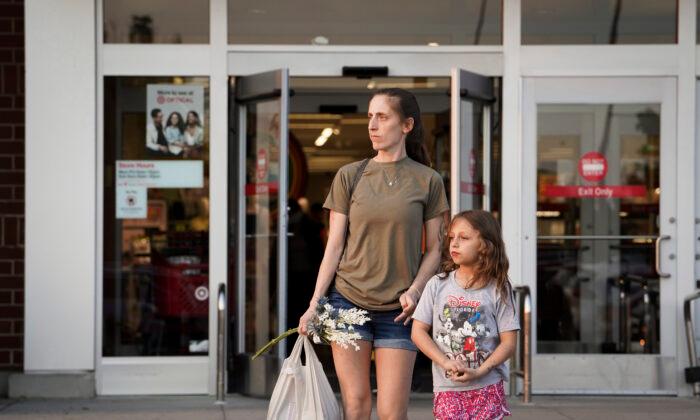The U.S. annual inflation rate rose to a lower-than-expected 3.2 percent in July, marking the first increase in a year, according to the Bureau of Labor Statistics. That was up from a 3 percent rise in June.
The consumer price index (CPI) edged up 0.2 percent month-over-month.
Core inflation, which eliminates the volatile food and energy sectors, eased to 4.7 percent, from 4.8 percent. That also came in below the consensus estimate of 4.8 percent. The core CPI inched 0.2 percent higher month-over-month.
Nearly all CPI indexes turned higher in July from June, including food (0.2 percent), energy (0.1 percent), shelter (0.4 percent), and transportation services (0.3 percent).
Many market analysts had anticipated that oil and gas would be the primary drivers of a higher CPI print. Crude prices have been soaring since the end of June, resulting in higher gasoline costs. Gasoline rose 0.2 percent, down from 1 percent in June. Fuel oil surged 3 percent, up from negative 0.4 percent. Natural gas services also went up, climbing 2 percent.
Supermarket prices jumped 0.3 percent, with various kitchen staples climbing last month.
One of the most notable increases was beef. The beef and veal category surged 2.4 percent, including a 1.5 percent boost for ground beef, a 6.5 percent spike for beef roasts, and a 2.3 percent rise in beef steaks.
Agricultural experts have been warning for the past year that the price of beef for consumers would skyrocket because of falling inventories and tepid output amid high input costs.
Oranges advanced 1.6 percent as the classical breakfast staple has seen production plummet as the result of a citrus greening disease that has devastated Florida crops. While Brazil has turned into one of the world’s leading orange producers, the South American market is beginning to see the disease in key growing areas.
Meanwhile, other foods that have seen significant month-over-month increases were bread (0.6 percent), apples (2.4 percent), coffee (1 percent), and butter (1 percent).
Shelter continues to remain elevated, with the index rising 0.4 percent. The rent portion of shelter also increased by 0.4 percent and is up 7.8 percent from the same time a year ago.
Producer prices will be the next major inflation metric. The consensus estimate for the producer price index (PPI) suggests it will rise by 0.7 percent year-over-year and 0.2 percent month-over-month.
The financial markets responded well to the softer inflation print, as the leading benchmark indexes inched higher.
High Inflation Still Harming Consumers
Despite the rate of inflation growth slowing from the 9.1 percent peak in June 2022, consumers are still feeling the effects of price pressures.Even as households struggle with the high cost of living, consumer sentiment has improved. The July University of Michigan Consumer Sentiment Index rose to 72.6, up from 64.4 in June and higher than the market estimate of 65.5. One- and five-year inflation expectations also edged up to 3.4 percent and 3.1 percent, respectively.
Should this weigh on consumption trends, the U.S. economy could take a hit, ING’s Chief International Economist James Knightley warns.
Federal Reserve and Interest Rates
In addition to the July CPI report, the Federal Reserve has several other crucial pieces of data to assess before making a policy decision at the September Federal Open Market Committee (FOMC) meeting.“The Federal Reserve will be watching two full cycles of economic reports between now and their September meeting, with employment and inflation data being the most prominent,“ stated Greg McBride, chief financial analyst at Bankrate. ”Following Friday’s [Aug. 11] monthly employment report, the July CPI release will complete round one of the most significant economic updates and further shape initial expectations about whether the Fed is done raising rates or slated to continue.”
Now that the Fed has lifted the benchmark fed funds rate to a target range of 5.25 percent to 5.5 percent, the highest in two decades, opinions among central bank officials are mixed.
Philadelphia Fed President Patrick Harker stated on Aug. 7 that the Fed could continue to wait before pulling the trigger on another rate hike.

“From my perspective, monetary policy is in a good place. We’ve got policy where we need to be,” Mr. Williams told the newspaper. “Because we have monetary policy, in my view, in a restrictive stance and definitely influencing the economy in the right direction, I don’t feel we need to take immediate action or specific action.”
“The recent lower inflation reading was positive, but I will be looking for consistent evidence that inflation is on a meaningful path down toward our 2 percent goal as I consider further rate increases and how long the federal funds rate will need to remain at a restrictive level,” Ms. Bowman said.
For Giuseppe Sette, president of AI financial market research firm Toggle AI, the latest CPI report “is one more nail in the coffin for the September rate hike.”
“Federal Funds rates are already at a level commensurate with the current level of inflation. You can certainly expect the Fed to keep rates here. But the hiking cycle? That’s over,” he said in a note.
Peter Schiff, chief economist and global strategist at Euro Pacific Asset Management, thinks “the headline number is about to rise sharply, led by higher surging oil prices.
“The Fed has already lost,” he posted on X, formerly known as Twitter.
At the recent post-FOMC meeting press conference, Fed Chair Jerome Powell reiterated that it would take until 2025 to bring inflation back down to its 2 percent objective.





